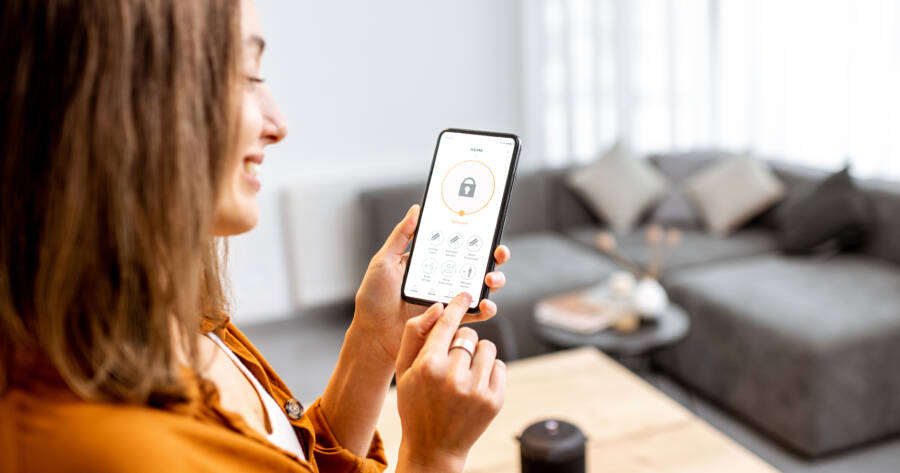Your home is a place where you want to feel safe and secure. However, less than 40 percent of Americans have a home security system. Cost may be a significant factor for many people. Professionally monitored systems can easily run up to $65 USD per month.
More and more people are opting for a self-monitored, DIY systems. They offer similar security features at a fraction of the price. If you’re in the market for a new security system, read on to discover more about what to expect, the pros and cons, and five of the best budget-friendly options.
How a No-Monthly Fee System Works
Many people aren’t aware of the options available when it comes to home security systems. While there are many traditional systems still available, cheaper, do-it-yourself versions are abundant in the market nowadays. These systems don’t require a monthly fee. The trade off, however, is that they don’t come standard with professional monitoring. Most of these DIY companies do offer it for an extra fee, though.
Instead, you monitor your own house using the hardware – cameras, sensors, etc. – that you purchase outright. Most companies offer an app for your smartphone that you can use to monitor, arm/disarm, and in some cases, access a live video feed.
All of these DIY systems can be set up right out of the box without professional installation. If you’re not confident in your handyman skills, most companies offer professional setup for an extra fee. You also don’t have to sign a long term contract – even if you decide to pay for professional monitoring at a later date. That makes a DIY security system a flexible and relatively inexpensive way to secure your home.
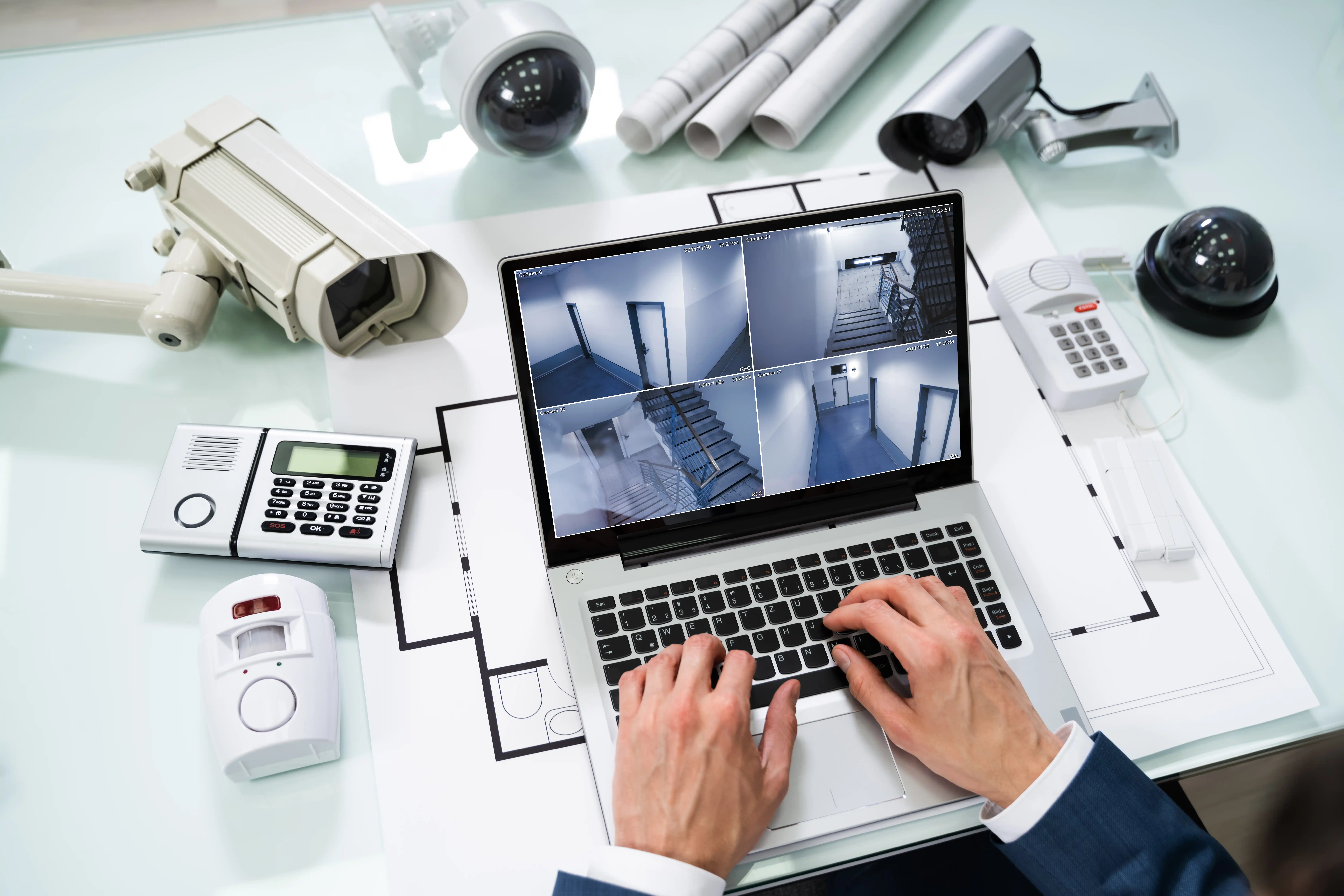 Shutterstock
ShutterstockBenefits of a DIY System
There are many benefits to this kind of home security system. The most notable, of course, being the absence of an ongoing monthly fee. You’re also able to customize the coverage for your home without it costing an exorbitant amount of money.
It’s also worth noting that the ability to add and stop professional monitoring on a month-to-month basis can be really beneficial. This is especially true for those who are away from their residence for weeks or months at a time. For example, if you’re traveling and won’t be home for a few weeks, or if you’re securing a cottage that you don’t live at full-time. In these cases, you can opt into monitoring for the period of time you need it and then opt right back out again without penalty.
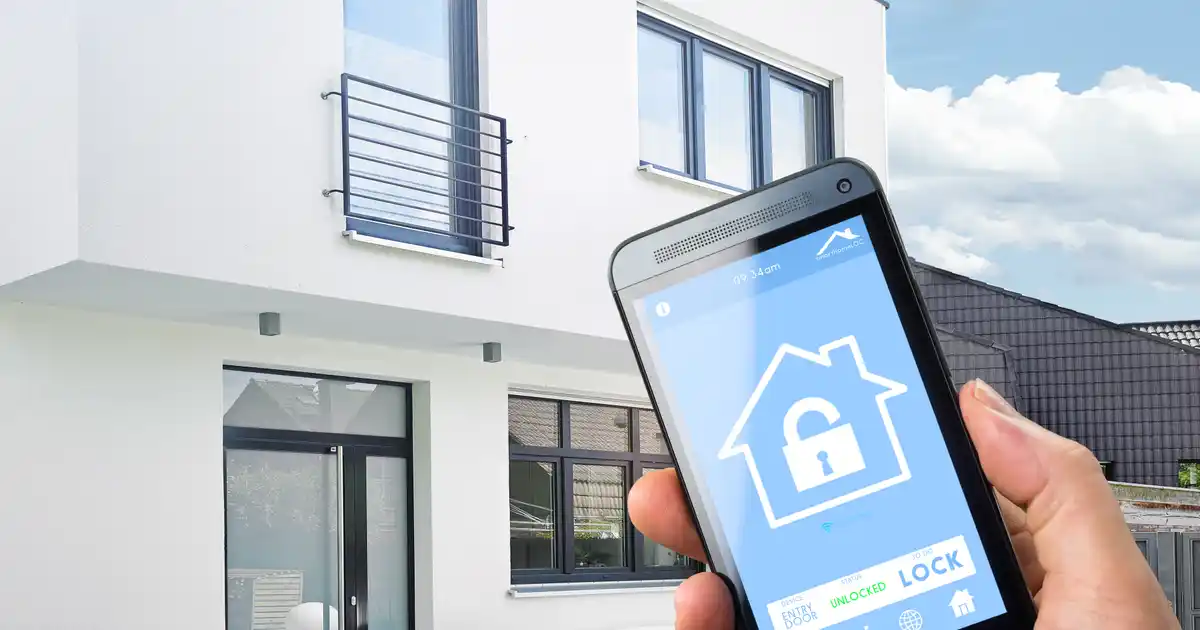 Shutterstock
ShutterstockDrawbacks of a DIY System
The biggest drawback of a DIY system is that emergency services are not automatically automatically if the sensors in your home are triggered. Homeowners are notified via their smartphones and must call police or firefighters for themselves. This is important to take into account when considering a self-monitored system. If you’re someone who doesn’t consistently have your smartphone on you, or regularly has stretches of time where you can’t check your phone, a DIY system without the professional monitoring add-on may not be the ideal security solution for you.
Top Five Options on the Market
There are many systems available these days, with more popping up every year. You’ll want to consider what option is best for you, your family, or your lifestyle. Here are five of the best available options.
 Shutterstock
ShutterstockSimpliSafe
SimpliSafe is a best-in-class home security system company with both preset packages and customized systems available. They’re won a number of awards and have a 60-day money-back guarantee, giving you peace of mind upon purchase. The whole system can integrate with Google, Alexa, and Apple products making it even easier to use.
Preset packages range in price from $244.96 to $504.86. Alternatively, you can build a system that’s custom for your residence. Start with a base station, keypad, and free indoor camera ($199.98). Then add as many entry sensors ($14.99) or motion sensors ($29.99) as you need, as well as an any other products, including:
- Indoor and outdoor cameras
- Video doorbell systems
- Smart locks
- Water and temperature sensors
- Glassbreak sensors
- Smoke and carbon monoxide detectors
- Sirens and panic buttons
- Keyfobs
You do have the option of adding professional monitoring for $0.33 or $0.93 per day, depending on what plan you choose. However, SimpliSafe’s DIY home security systems do not require this add-on to keep your house or apartment, and possessions inside safe.
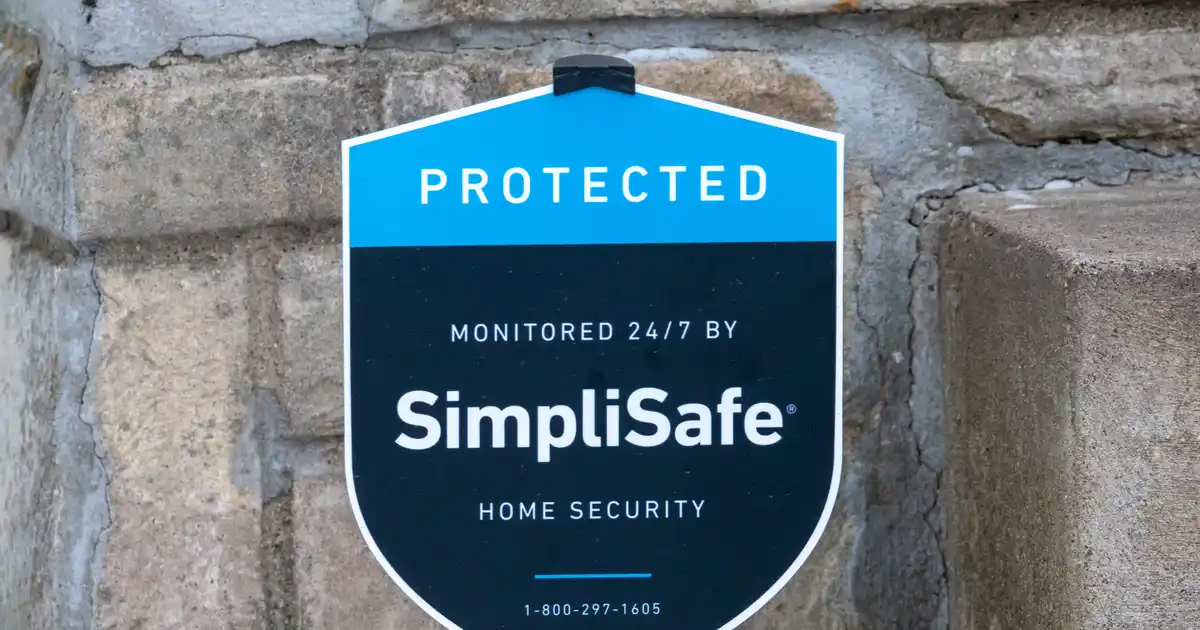 Shutterstock
ShutterstockRing
Ring has long been known for their video doorbell, but recently introduced their home security system. There are 5, 8, 10, and 14 piece kits that range from $199.99 to $329.99 USD. There are also alarm pieces that can be purchased separately and combined to create a custom DIY system. Pro versions of their systems are also available, which have a built-in router to ensure that your Wi-Fi is protected as well. Ring offers a wide variety of pieces including sensors, motion sensors, smoke and C02 alarms, glassbreak sensors, open window magnets and more.
All of their system pieces can be linked and controlled in the free Ring smartphone app. That makes it easy to arm/disarm and monitor your home from anywhere. Their products also come with battery backups, ensuring that you have coverage for up to 24 hours if you lose power or internet.
You can opt in or out from Protect Pro, Ring’s professional monitoring plan, for $20/month.
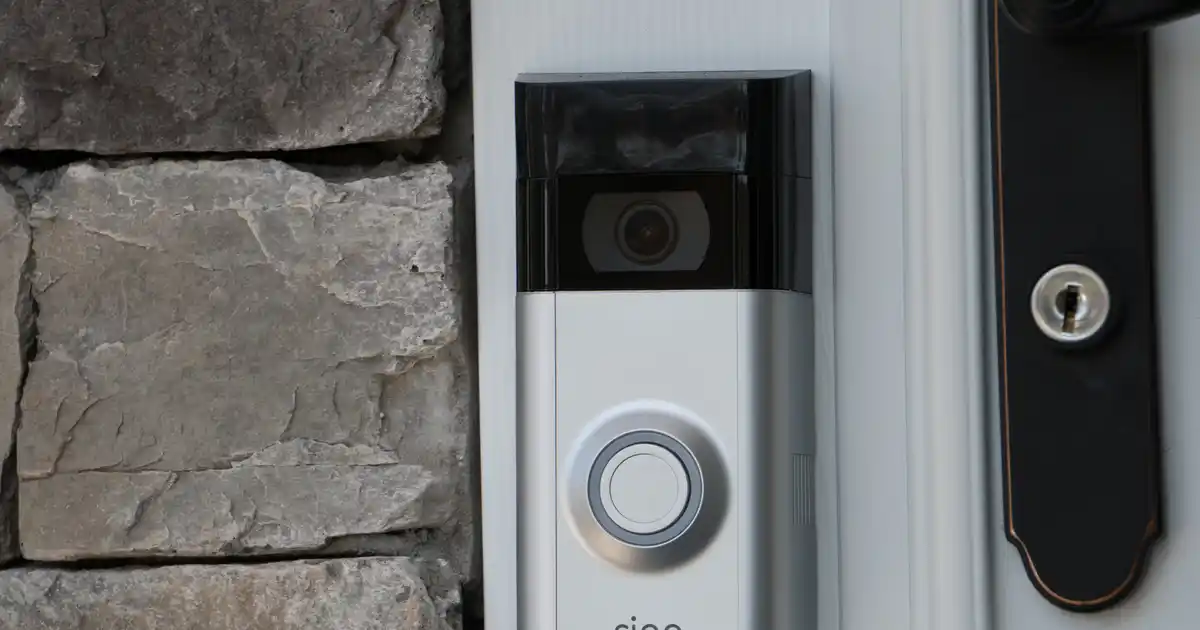 Shutterstock
ShutterstockAbode
Abode is a true DIY home security system that comes with free app access to self-monitor your home and a 30-day money-back guarantee. Each system starts with a Gateway, which acts as the hub and connects to whatever accessories you need to protect the space. Many accessories are sold in single, two, or four packs, and include:
- Indoor/outdoor cameras
- Door/window and glassbreak sensors
- Motion sensors
- Multi sensors that read light, temperature and humidity
- Keypads and keyfobs
- Water leak sensors
- Smoke and panic alarms
- Indoor and outdoor sirens
Their system integrates with Google Assistant, Apple HomeKit, and Amazon Alexa, making it easy to integrate into your smarthome setup. You can opt into one of Abode’s plans if you desire: the Standard plan ($65.99/year for a number of extra features) or the Pro plan ($219.99/year for features, plus 24/7 professional monitoring).
There are a couple of ways to save on a system. Unlike many companies, they offer price matching. That means if one of their competitors gives you a lower price, they’ll do their best to match it. The website also has a refurbished section where you can purchase starter sets for a lower price, with the same guarantee as a new one.
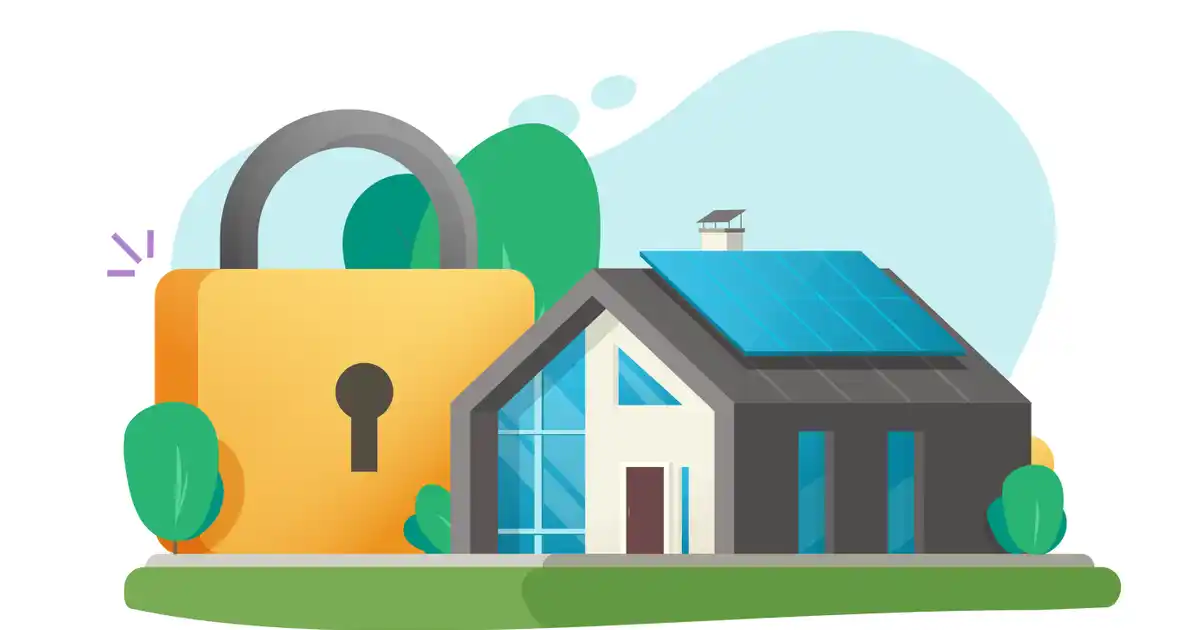 Shutterstock
ShutterstockBlue by ADT
Get a DIY security system by the same trusted security giant that’s been around since 1874. You can purchase a Starter, Starter Plus, or Premium System bundle, or build your own (the most popular option). This customizable option starts at $179.99 and includes a smart home hub and a smartphone app. You can then add sensors (window, door, smoke, motion, temperature/flood), cameras (indoor, outdoor and doorbell), and any other accessories you want. Their cameras even allow you to speak to visitors in your home!
Like the other companies, you can choose to add professional monitoring for $19.99/month. However, it’s not required to take advantage of ADT’s flexible, smart security system.
 Shutterstock
ShutterstockArlo
Arlo currently only has video monitoring systems available to purchase. However, they’re about to launch a full DIY security system that promises to be a great option. This system integrates seamlessly with all of their existing products, including camera doorbells, indoor/outdoor cameras (with solar charging!), and floodlight cameras. Their cameras work with Amazon Alexa and Google Assistant, making arming and disarming a breeze.
The all-in-one sensors detect door and window opening, motion, freeze, leaks, smoke and CO2, keeping your house safe and flexible with a versatile sensor. You can also add monitoring for a small fee, which varies from $2.99-to-$14.99 a month, depending on how many cameras you have and whether you want emergency response options.
 Shutterstock
ShutterstockHow To Choose a Home Security System
There are a number of things to consider when choosing a system to protect your home. Your budget is one of the most important considerations, though with a DIY system you only have to consider the initial equipment cost and not a monthly budget commitment. You should also compare the alarm pieces available from a given company to determine if you can get the coverage you want.
Finally, consider what guarantees a given brand makes about trial periods and warranties. This ensures that you’re not out of pocket if you aren’t satisfied with your new DIY home security system after using it for a while.
 Shutterstock
Shutterstock